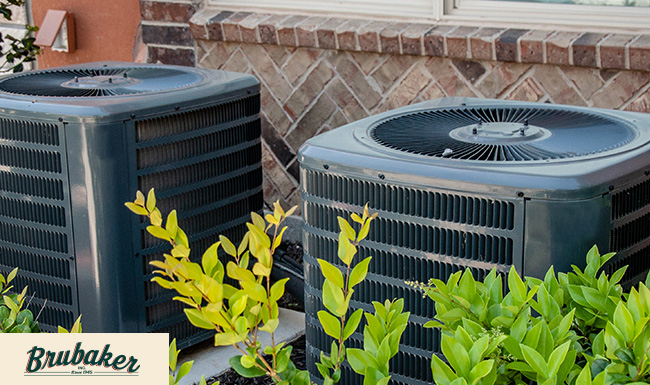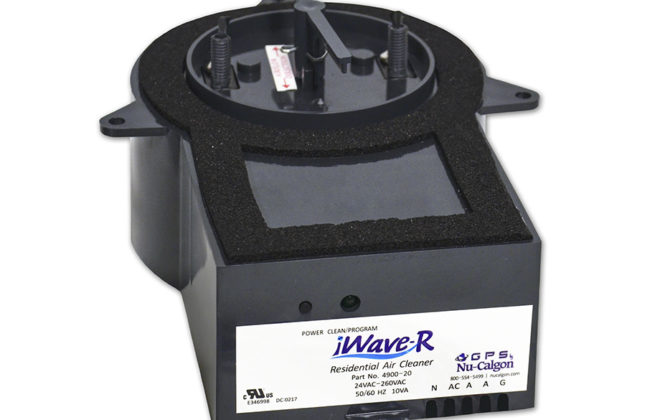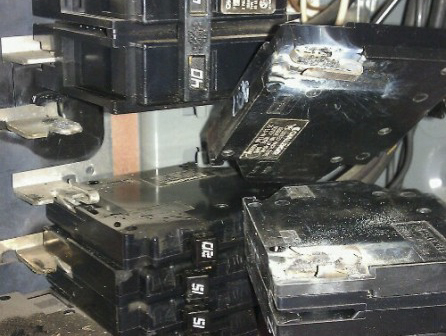How to Hide Your Outdoor HVAC Unit
 The outdoor HVAC unit — that big metal box that contains the compressor, fins, wires, tubes, and fan — is a must-have for central air systems, but it can be a huge eyesore in the yard.
The outdoor HVAC unit — that big metal box that contains the compressor, fins, wires, tubes, and fan — is a must-have for central air systems, but it can be a huge eyesore in the yard.
In addition to hiding the unsightly equipment, many homeowners are also looking for ways to prevent theft of copper tubing and other metals. A couple of minutes is all a thief needs to get about $50 worth of copper and scrap metal from an HVAC unit that costs thousands of dollars. And lastly, if you have a dog or cat, it’s important to protect the unit from acidic urine that could damage and corrode the aluminum fins.
Continue reading to learn the proper way to hide or camouflage your outdoor HVAC unit (without blocking access or airflow).
Your Outdoor Unit Needs Room to Breathe
Your outdoor condenser needs proper airflow to work efficiently. You also need plenty of room for regular service and cleaning. It’s a good idea to schedule professional cooling maintenance in the spring and heating maintenance in the fall. As part of the annual inspection, your technician should also clean the outdoor unit, including the delicate aluminum fins.
To be safe, maintain a minimum 2-foot clearance around the entire unit. There should be enough room for a technician to easily access the top and sides of the unit. If you have plants around the unit, make sure they are trimmed back.
No matter how you choose to hide your outdoor condenser unit, consult the manufacturer’s instructions for enclosure guidelines. Some units require more than 2 feet of clearance. If you can’t find your owner’s manual, search for it online. And never cover your outdoor unit! This can cause mold, corrosion, and pest problems.
Not following these guidelines could void your manufacturer’s warranty! If you have any questions about how far your enclosure should be from the unit, contact Brubaker, Inc.
Options for Blocking Your Outdoor Condenser Unit
1. Lockable Metal Cage
Air conditioning cages aren’t the prettiest things in the world, but they can help you safeguard your equipment from thieves. A couple hundred dollars on a welded steel cage is much better than spending thousands on a new unit. A lockable hinge allows access for service and maintenance. They are also perforated to allow for proper airflow.
Some property owners choose to install electronic sirens to deter AC theft, but your unit is still accessible and may suffer damage while the crook gets away. Very few thieves will go to the trouble of trying to cut through a steel cage. You may also want to consider putting up a fake alarm sticker warning that the home is protected by an alarm system. It’s better than nothing.
Air conditioning cages are not theft-proof, but they serve as a useful physical deterrent. For less than fifty bucks, it’s likely that a thief is going to target an unprotected AC unit over a protected one. Speak with a professional HVAC contractor before installing a metal cage around your outdoor condenser unit. DIY installations can get dangerous if wiring or tubes need to be disconnected and reconnected.
 2. Plants
2. Plants
While it’s important to make sure that plants do not encroach on the unit and suffocate it, they can work as an attractive camouflage. It’s a good idea to plant bushes and hedges that are almost fully grown so you aren’t surprised by how large they get.
Boxwood hedges are a popular option for blocking outdoor AC units because they can be grown as a uniform fence or container. In addition to dark green, they also come in white-variegated and gold varieties. Keep in mind that they tend to grow very slowly, so buy one that is already mature.
Other plant options around your AC unit include tall grasses or another bushy plant, like lavender lilac. You can also place potted plants around the unit. We recommend taller plants like trees in the back and perhaps shorter plants in the front to create a layered look. You may also want to consider a tiered plant stand.
If you do have plants around your condenser unit, take extra care to keep your condenser clean from leaves, dirt, and debris. When planting, consider the mature size of the bush or shrub. Like anything else, plants should be at least 2 feet away from the condenser.
If you do grown plants around your outdoor HVAC unit, you will need to go out and regularly clean the area of leaves, seeds, and other plant debris that could clog the outdoor unit. Additionally, regular trimming and pruning is necessary to maintain the proper spacing.
3. Trellis
You can install or build a trellis near the unit and plant vines, beans, and other climbing plants around the base. Eventually, all the openings will get filled by the growing plant. Popular trellis plants include bougainvillea, trumpet vine, morning glory, honeysuckle, wisteria, climbing hydrangea, jasmine and butterfly vine.
Your local home improvement store will have a lot of trellis options to choose from. Follow the instructions on the packaging and secure them together with plastic zip ties or metal brackets.
Keep in mind that you will need to keep a careful eye on the vine plants to make sure they aren’t growing into the unit. Trim them back as necessary.
4. Pallets
If you’re looking for a durable wood enclosure, pallets are a cheap and long-lasting option. Pallets are often given away for free by grocery stores and listed on sites like Craigslist and Facebook.
Since pallets have lots of openings, airflow can move freely in and out. You still want to leave your unit plenty of room, but the lattice-like design protects your unit while allowing it to breathe.
You can also beautify your pallets with flowers, succulents, and other plants.
5. Well-Ventilated Box
You can build your own slotted enclosure, but choosing the right one is best determined by your skill level. The basic design for boxes of this type is the butt-joined box. A “butt joint” is simply a 90-degree connection between two pieces of wood where one piece is “butted” or joined with the face of an adjacent piece. Butt-joined boxes are typically made from 1/2-3/4 inch-thick materials.
You can make your slats
Use treated wood to prevent rot. You can also find reclaimed shutters at thrift stores, junk yards, and online. Use outdoor paint to protect the wood from the elements.
6. Fences and Screens
If you already have fencing around the property, you may want to hire a professional to install a custom fenced box around the unit. Regardless, choose a fence or screen that complements the rest of your property. You may want to take a look around Pinterest for ideas and inspiration. Consider building your own outdoor screen or horizontal slat fence.
When you’re finished, add an pop of color to your slotted fences, trellises, and screens with plants and flowers.
7. Draw Attention Away from the Unit
Design your garden and landscaping in a way so your eye is drawn away from your AC unit.
For inspiration, here are 13 different DIY ideas for AC unit walls and enclosures.
Before Starting Your Project
Hopefully, you’ve been inspired to hide your outdoor condenser unit! But, before you head to the Home Depot, speak with the professionals at Brubaker, Inc. We’ll make sure you’re HVAC warranty remains in effect and the cover looks great while allowing for maximum efficiency. And never attempt to disconnect or reconnect HVAC components yourself. Always speak with a professional HVAC technician before starting your HVAC cover project. We’ve seen too many voided warranties and AC covers that are dangerous or restrict access and airflow.
Schedule Annual Professional HVAC Maintenance
Scheduling professional heating and air conditioning maintenance is the most important thing you can do to lower your energy costs and extend the lifespan of your HVAC equipment. Even if you keep your indoor and outdoor units clean, they still need to be professionally cleaned and inspected every year. Ideally, heating maintenance should happen in the fall and air conditioning maintenance in the spring.
For service that exceeds expectations, contact the fast and reliable technicians at Brubaker, Inc. for your annual heating, cooling, plumbing, and electrical inspections. 24/7 emergency service is available to our valued customers in the Lancaster, PA area.



